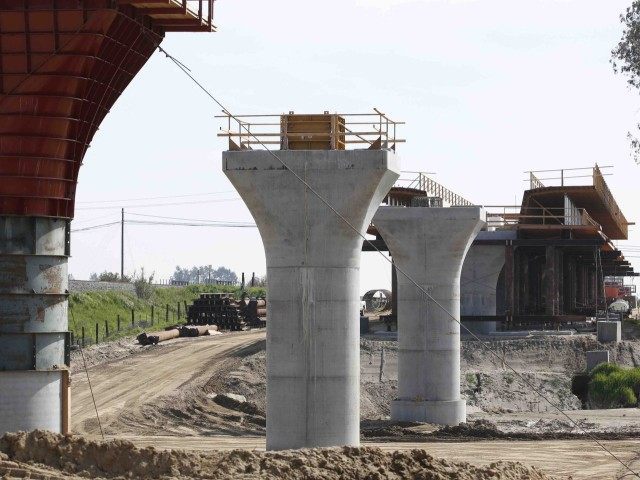The California High-Speed Rail Authority cleared a legal challenge last week when a Sacramento judge ruled the authority does not have to validate required travel time between LA and San Francisco during the planning stages.
It may, however, have to make a validation before issuing bonds.
Kings County and a group of landowners had sued the High Speed Rail Authority claiming that the “state’s projections on ridership, construction and operating figures are not reliable.”
In 2014, Breitbart News broke the news that the high-speed rail project would not make the two-hour-forty-minute travel time that was originally advertised when voters approved the project in 2008.
But Sacramento County Superior Court Judge Michael Kenny ruled that since the true costs and speed of the bullet train are undeterminable during the “planning” phase, a lawsuit to shut down the bond sale is not “ripe for review” at this time.
Unbeknownst to most Californians, the ‘High-Speed Rail Authority’ has not issued any of the $9.9 billion in municipal bonds approved by voters with the passage of Proposition_1A in 2008 to build the first phase of the project. To fund the start-up cost so far, the authority has been operating on about $3.2 billion in federal transportation and stimulus funds, plus $750 million in cap-and-trade money from the state’s greenhouse gas-reduction program
Breitbart News has extensively reported that the expected price tag for what proponents of Prop 1A called the “Safe, Reliable High-Speed Passenger Train Bond Act for the 21st Century,” has relentlessly risen since 2010 from $33 billion to about $93 billion and the 2022 completion date has been pushed out to about 2043.
Total funding for the 800-mile project is currently only funded for $26 billion, including sale of all the bonds. There is no plan on how to fund the 21-year delay and $67 billion underfunding of the project.
Two biggest delays in the project were the cost of building a dedicated track through the Peninsula in the Bay Area and the boring tunnels through Southern California mountains that run between the San Gabriel and the San Andreas faults.
To hit the 125 mile-an-hour speeds necessary to meet the promised 160 minute LA to SF trip time, the Authority originally planned to build dedicated tracks through Silicon Valley and on up to San Francisco. But after analysis revealed that the cost to acquire the land and build infrastructure would result in a $30 billion cost overrun.
The Authority decided in 2012 to default to a “blended” strategy of using the existing Bay Area commuter rail tracks. But with average track speeds of 55 miles-per-hour, the cost savings will add about 40 minutes to the trip.
The Authority originally estimated the Southern California mountain tunneling would begin in 2019 and be completed in 4 years. But according to a Los Angeles Times interview with MIT Professor of Civil Engineering Herbert Einstein, given California’s maze of fractured granite rock and fault lines, realistic progress at 10 to 20 feet a day and crews working 261 days a year would take 7 and 14 years to complete.
Judge Kenny did not disagree that the sponsors of the “Safe, Reliable High-Speed Passenger Train Bond Act for the 21st Century” were dishonest about the trip time and cost overruns, but he ruled that there is no recourse for the litigants during the so-called “planning stage” of the project.
One of the reason the proponents of Prop 1A have not sold the bonds is that they probably are worried about the legal liability of filing disclosure statements with the U.S. Securities & Exchange Commission that promise bond buyers that the bullet train from LA to SF can still make the trip in 2 hours and 40 minutes at a cost of $33 billion.
The latest court battle against the California High-Speed-Rail can be chalked up as a loss for the opponents. But with the judge’s ruling now making the sale of the $9.9 billion bond to fund the construction a virtual impossibility, the opponents of the bullet train may be winning the war.

COMMENTS
Please let us know if you're having issues with commenting.